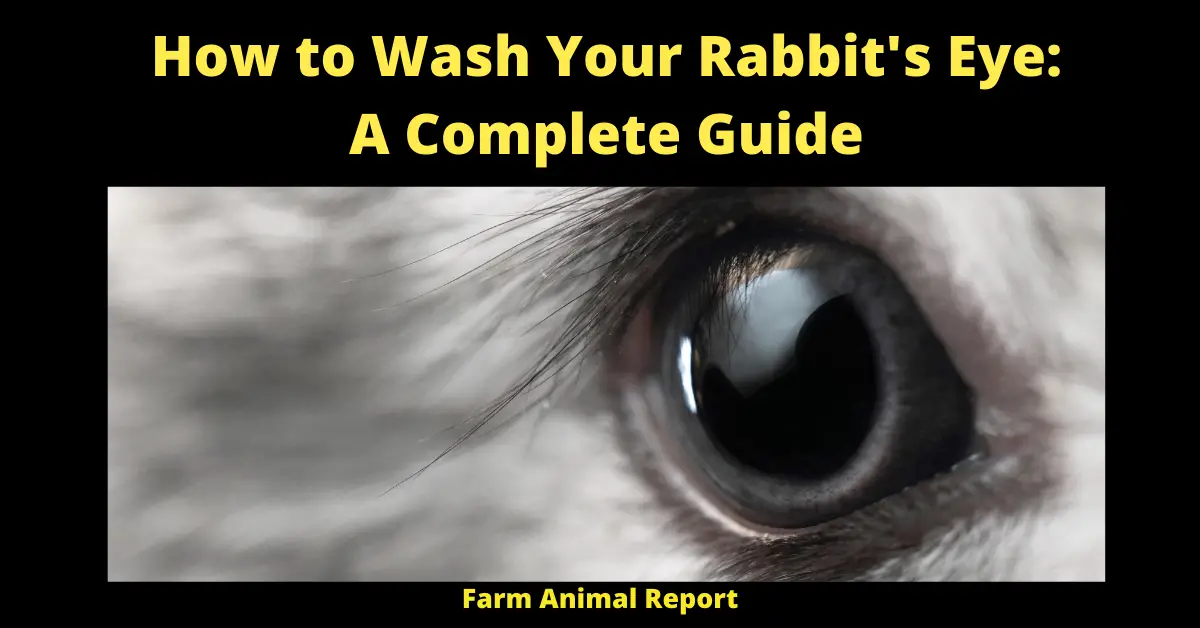As a general rule To clean a rabbit’s eyes when they have dried gunk around their eyes, you’ll need a soft clean cloth. Moisten that cloth with warm water in a bowl at your side. Then get your bunny relaxed on your lap, before slowly and gently placing the moistened cloth over their eyes. Hold the moist cloth on their eyes for a few moments to allow the gunk to loosen, then gently whip the drainage away
How to Clean Rabbits Eyes: A Complete Guide
How to Wash Your Rabbit’s Eye – Rabbits are also known as bunnies and bunny rabbits. They are small mammals belonging to the family Leporidae and order Lagomorpha. The Old World or European (Oryctolagus cuniculus) rabbit is the only genus of domestic rabbit. As a pet, they need more care and attention. Male rabbit called bucks while female rabbit called does. In the 18th century, an older term used for rabbits was Coney. These terms derive from the Latian word cuniculus. Nowadays, the terms kit and kitten are used for the young rabbit. A group of rabbits produces by a single matting. This group is known as a colony. How to Clean Rabbits Eyes
Check Out Amazon for Resources about Breeding Rabbits
Some people confuse between rabbit and here. The main difference is here are precocial. It means they are born mature and move with the help of hair and good vision, while rabbits are altricial, born hairless and blind, and move with parent care. Hares live an independent life in a simple nest above the ground, while rabbits live in a group in burrows or underground. Rabbits are generally smaller than hares, they have small ears and hind legs compared to the hare. Rabbits have been domesticated like European rabbits are commonly kept as livestock or as a pet.
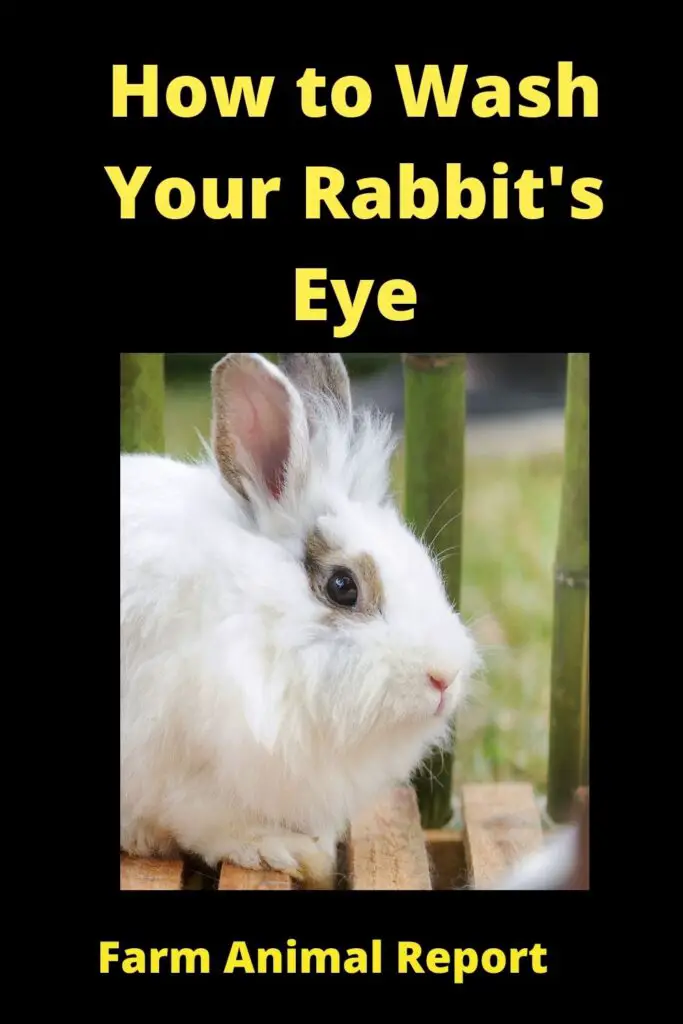
Interesting Facts about Rabbit Eyes
- Rabbits can see behind them.
Rabbits have large eyes and almost 360-degree vision. They have not only seen in front of their head but also seen above and behind their head. They have only one blind spot located directly in front of their nose. Rabbits have a great sense of smell, and their whiskers can help them to find what is directly in front of them.
- Rabbits sleep with their eyes open.
Rabbits can often sleep with their eyes open. Usually, rabbits close their eyes for sleep when they feel safe. So, you might think your rabbit never sleeps because they never close their eyes, but in reality, they are sleeping at that time with open eyes in front of you.
- Rabbits only blink once every five minutes.
Rabbits only blink 10 to 12 times in an hour. Rabbits only once every 5 to 6 minutes! Compare that to humans who blink 10 to 20 times every minute. 50 times more frequent than rabbit blinks. Rabbits can get away from blink. So, inconsistently because they have a slight layer that covering their eye that is alluded to as the third eyelid. This is a straightforward film, so you can’t see it by any stretch of the imagination. This third eyelid does the work of keeping a rabbit’s eye moist and safe it from residue and trash. Your rabbits don’t need to blink frequently in light because the third eyelid does the vast majority of the work.
Rabbits do not have complete color blindness. They have photoreceptors that detect green and blue light. Like humans, they have three types of receptors that detect red, blue, and green. But in the rabbit the receptors that detect red light are absent.
- Rabbits have grainy night vision.
Rabbits have grainy night vision because rabbits’ eyes have much large percentage of rod cells with low light sensitivity. A rabbit in a situation, where there is complete darkness will have to rely on its other senses to navigate.
Should you Clean Rabbit Eyes?
Yes, we clean the rabbit’s eye. While cleaning the rabbit eye needs special care and attention. We need some expertise, like handling the rabbit. We ensure the rabbits’ health while cleaning their eyes. Their eyes need a lot of care and consideration. Rabbits are known for their lovably huge eyes, but they have more chances of eye issues. Like eye care in dogs and cats, Pet plans are the ideal way of keeping your rabbit’s eyes healthy.
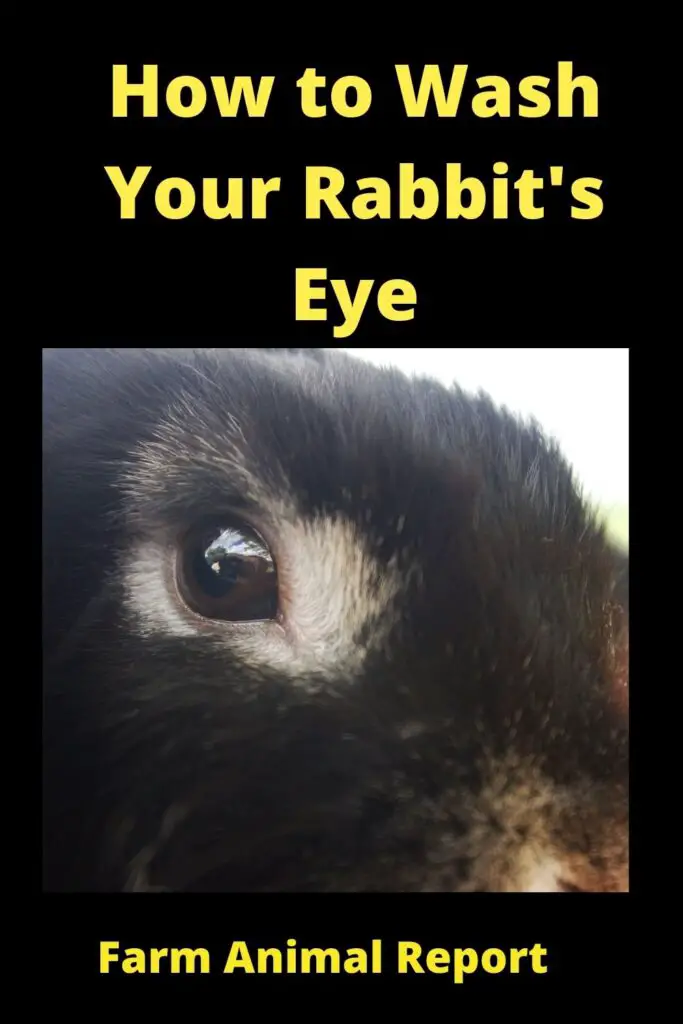
Is it Normal for Bunnies to have Eye Boogers?
No, it is not normal for bunnies to have eye boogers. Bunnies are naturally clean mammals. They take their grooming seriously. Eye boggers in the rabbit eyes are always noticeable because the most common problem with the rabbit eyes is their eye duct. They become inflamed and have a watery discharge. The discharge is sticky that sticks or stains around the rabbit’s eyes. They are stubborn and cannot be cleaned by their paws. A leaky tear duct usually causes this problem. The discharge may be temporary and can completely block the eye.
Sometimes rabbit has some other problem because the tear duct link to underlying dental issues. This is because that your bunnies’ tear channels run from within the corner of their eyes to their nasal pit, a cavity that takes the ducts near the roots of their teeth. In case your bunnies’ teeth have developed excessively long or moved in their attachments. It causes a shift in pressure that infiltrates on the ducts so, they become hindered and then become infected. Your doctor can treat this by flushing out the tear ducts with a saline solution for removing the discharge (pus) and any contamination.
Why you should wash your Rabbit’s eye? ( how to wash a rabbits eye )
There are a lot of reasons to wash the rabbits’ eyes. The eye is a very delicate organ. In many disease conditions, eye discharge occurs so, the need to wash the eye for proper treatment and healing of the infection. If the eye continuously discharges from the eye. So, we will need to clear up with a course of antibiotics. If the discharge is continuous, the rabbit can be more prone to other different eye infections. If your rabbit has intermittent eye release, you need to investigate things all the more closely. While observing your bunny’s eye, any stickiness is an awful sign. It suggests that pus is spilling from the eye, and the use of anti-microbials will be needed to clear up the contamination. Some most important diseases are;
Foreign object
Any foreign object in the eye cause irritation. Always ensure that your rabbit does not have something in the eye at the onset of discharge. The most common object that irritates is food, hair, and toys. If rabbit didn’t scratch their cornea, this will correct quickly itself. The discharge will cease once the foreign object is removed. It should not take more than 24 hours. If your hare has hair, or an eyelash, caught in its eye. It will show up as a white cloud that floats in rabbits’ cornea. Dwarf rabbits, which have larger, rounder eyes, are especially inclined to this issue. It’s best to leave your rabbit to do this. If continuous irritation in the rabbits’ eyes, you should contact the vet. Attempting to remove the hair with tweezers places them at risk.
Physical defects in the eye
Rabbits’ tear ducts are particularly narrow. So, they are more prone to blockage of their eye ducts. It will cause continuous production of the tears. The vet may agree to open the tear duct surgically if the life of the rabbit is compromised. You have regularly washed the eye with lubricating eye drops. If any other abnormalities around the eyelids, they are more likely to be treated surgically. If your hare scratches their eyes, they might develop an ulcer. It will be irritating and painful and should treat with eye drops.
Conjunctivitis
It is an inflammation of the conjunctiva. It is also known as Pink eye or weepy eye. In the rabbit, it commonly stems from the nictitating membrane. Around 30% of rabbits will foster this condition once. In addition to discharge eyes and eye boogers, affected bunnies constantly rub their eyes. It can affect rabbits for a long time. It tends to be a response to an irritant, allergy, or bacterial contamination. Most of the time, it’s made by nearness an individual victim. Conjunctivitis is infectious in people, and it spreads similarly as fast among rabbits. If you have numerous rabbits and one is struck down, plan to treat every one of your pets. Sharing water containers and toys will pass on the condition. Be aware of your wellbeing, as well. Conjunctivitis may be delivered from rabbits to people. Wear gloves while taking care of a bunny with this condition. A vet will advise an ointment or eye drops, which will calm your rabbit’s indications. Conjunctivitis can generally reoccur. This is particularly probable if a box mate gets it from your rabbit, or even you. Treatment manages the issue as an oddball; it doesn’t inoculate people or bunnies.
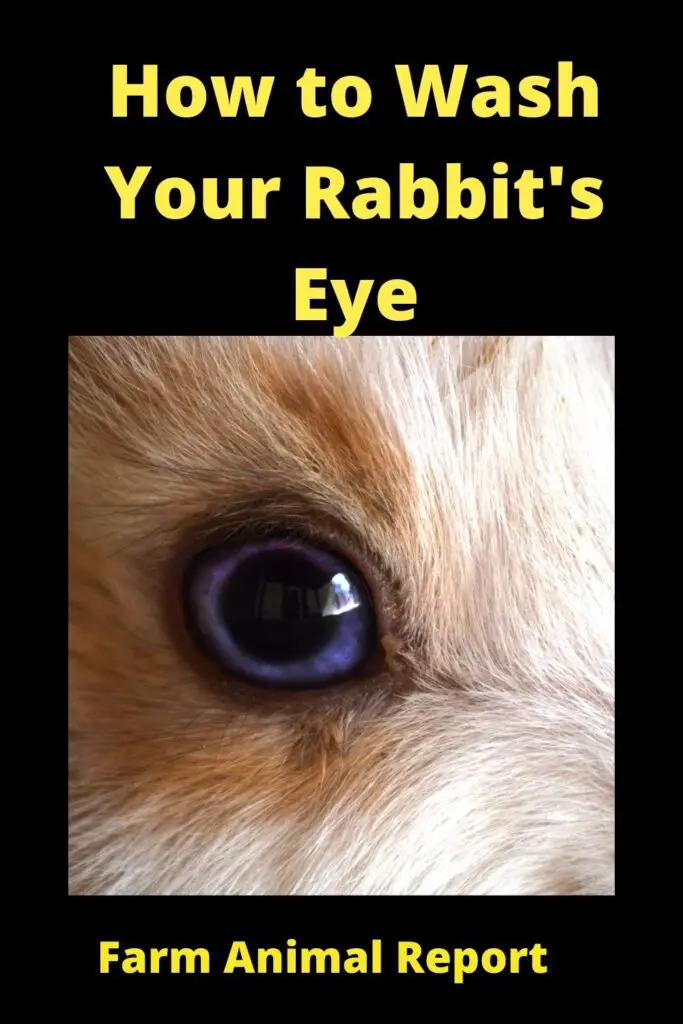
Dacryocystitis
When the upper teeth develop excessively long, or there’s another dental issue. These teeth put pressure on the nasolacrimal duct and cause watering, enlarging, and a sticky, white discharge from the rabbits’ eyes. This inflammation is called dacryocystitis. It’s very irritating for the rabbit. You might see your rabbit scratching its eyes or keeping them shut. If the infection is not severe, vets most of the time treat this infection with antibiotics and by flushing the duct to remove pus and mucus with a saline solution.
Iris prolapses
Protruding of the iris is known as iris prolapse. This condition occurs when the iris sticks out through the cornea. It is noticeable as a visible bump of the enlarged iris on the rabbit’s eyeballs. It’s a rare condition, but it needs to be treated immediately while the prolapse is small and without any other complications.
Snuffles
It is a viral and contagious disease of the rabbit. They have runny noses and sneeze a lot. Snuffle is just like the flu in humans. The prognosis of this condition is similar to the human flu. If your rabbit is healthy then it will recover naturally. They need a lot of rest. If the health of the rabbit is compromised, snuffle can be very dangerous. Treatment for snuffles will include a course of anti-microbials. It’s at your circumspection whether you think about this important for your rabbit. Simply, you know that snuffles are profoundly infectious among hares. If one of your pets gets the illness, any pen mates will probably take action accordingly in a little while.
Glaucoma
Glaucoma is an infection wherein a rabbit’s eye discharges a lot of fluid. It’s rare in rabbits. The primary issue with glaucoma is that the symptoms are minor from the start. A few rabbits don’t show any discomfort. However, eye boogers can be a warning sign. Glaucoma results from inordinate liquid behind your rabbit’s eye. It is often released as excessive tear production. This will turn hard. Glaucoma should be dealt with rapidly. Whenever left excessively long, it can prompt irreversible visual impairment. A vet will prescribe eye drops. Follow-up arrangements will likewise be important to look at your rabbits’ progress. The prescription might be changed or improved. Glaucoma treatment is a long-lasting responsibility. The infection is rarely altogether killed. You’ll have to clean your rabbit’s eyes consistently and check for indications of reinfection.
How do you get Gunk out of a Rabbit’s Eye?
Usually, you get the gunk out of a rabbit’s eye with a course of antibiotics. Rabbits can be more prone to eye infections. When you find any eye bogger in the rabbit eye, you should clean them. The longer, they stick around the eyeball it will be dangerous. So, you get the gunk out of a rabbit’s eye with eyedrop or wash with saline solution.
To clean a rabbit’s eyes when they have dried gunk around their eyes, you’ll need a soft clean cloth. Moisten that cloth with warm water in a bowl at your side. Then get your bunny relaxed on your lap, before slowly and gently placing the moistened cloth over their eyes. Hold the moist cloth on their eyes for a few moments to allow the gunk to loosen, then gently whip the gunk away. Repeat as needed. You can apply the same method to the face of the bunny that is struggling with something dirty or sticky on its face. You can apply a little soap to the washcloth, but make sure to keep it away from the eyes and ears.
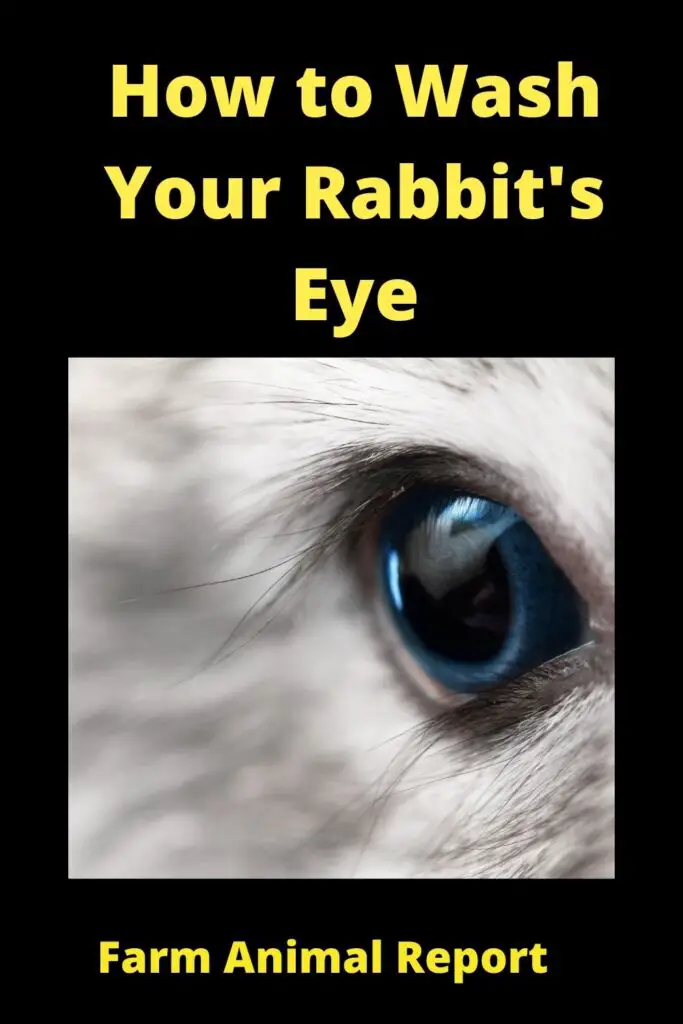
How to flush a Rabbits eye?
A rabbits’ eye is a very delicate organ. So, you must care when you flush your rabbit’s eyes. You should have to flush the rabbit’s eye with a soft moist cloth in warm water. Do not clean the eye with a hard hand and cloth. You just let it soak with water and remove it lightly. It’s recommended to clean and wash the eye with lukewarm water. You can also use a commercially available rabbit-friendly solution. If you observe any discharge from the eye while grooming. Then clean it with water.
First to ask someone to hold the rabbit firmly, calm so you can wash the eye easily. Then soak a piece of muslin cloth within lukewarm water and wet the rabbit’s eyes, but you don’t put pressure or drab water. It will cause irritation or any other injury. Now you should wait for a few minutes to let the water soak and soften the bogger. Then remove the debris material and sticky discharge around the eye. At last, take a few seconds to dry the eye and apply ointment and eye drops.
Can you use saltwater on Rabbits’ Eyes?
Yeah, you can use salt water solution on rabbits’ eyes. In the case of Dacryocystitis (an inflammatory condition). You may notice your rabbit continuously scratching the eye and keeping them shut. In simple cases, the vet usually treats the infection with medication and flushing the eye with saltwater or saline to remove pus and mucous.
How to Clean Rabbits Eyes
How do you treat an eye infection in rabbits?
- Antibiotic eye drops kill any bacteria or other organisms.
- Anti-inflammatory to relieve pain if their eyes are red or inflamed.
- Artificial tears keep the eyes moist while they heal.
- Regularly bathe your rabbit’s eyes to remove discharge.
How do you treat an eye infection in rabbits?
Step by step instructions on how to properly wash the eye with proper technique and safety precautions
- First, you can check the medication, eye drop, or ointment, either they are expired or not. Because the eye is a very sensitive organ so, you always take care before the use of any kind of medicine. Then you can read the required dose and route of administration, like some medicine to be given once a day, while others up to six-time daily. Always follow the instruction of your vet very carefully. Never give more than the recommended dose. If possible, try not to miss the treatment.
- Now, you restrain your rabbit. It was easier to hold your rabbit at a comfortable working height. Try to place your rabbit on a raised surface or table, If the surface is slippery. Put a towel or other material on the surface so that your rabbit feels more secure. If your rabbit is angry, you may need to wrap your rabbit in a towel or other cloth to prevent them from scratching you. You will need to find an assistant that helps you. You found an experienced person who knows how to handle the rabbit, while the other person grasps them and puts the drop into the eye.
- A person holds the rabbits’ head firmly under the chin and moves the head upward. The other person holds the eye drop bottle in one hand and opens the rabbits’ eye with the help of thumb and forefinger to make a pocket. The position of the eye drop bottle is a few centimeters above the eye and squeezes gently to release the required number of drops. Avoid touching the bottle with the eyeball.
- To put ointment and cream in the eye is difficult because these are thick like toothpaste. Hold the rabbit and open the eye as above. Then hold the ointment and cream above the eye squeezes out some ointment, and let put a drop into the eye between the eyelid. To avoid touching the tube nozzle with the eyelid.
- The eye is one of the most sensitive parts of the body, and putting anything in the eye cause discomfort. Some ointment and eye drop cause slight irritation. Sometimes rabbits blink eyes a lot of watery eyes after a few seconds after you have to put the drops. Sometimes rabbit rubs their eyes with a paw and rub against the ground. The eye becomes red and sore. If you have noticed such a sign, stop the treatment immediately and contact your vet.
- You always continue the treatment as long as your vet recommends. Sometimes problem gets better quickly after the treatment once. But if you stop the treatment, the condition becomes worse.
How can I treat my Rabbits’ eye infections at home?
You can treat a rabbit’s eye infection at home easily. You can hold the rabbit firmly and open the eye mentioned above. Then you can wash the rabbits’ eyes with saline solution and remove any debris, pus, and other contamination around the eye. Then you allow to dry the eye and put eye drops and ointments in the eye very carefully. You continue the treatment as long as your vet recommends.
Aftercare tips
- Regularly wash your rabbits’ eyes to remove any discharge and pus.
- Use artificial tears to keep the eyes moist.
- Check your vet regularly to investigate and treat the cause of the infection.
- Keep your rabbits’ teeth healthy by providing them with a good quality diet.
- Always use good quality bedding. These are dust-free and clean the living space regularly.
- Feeding and watering utensils are cleaned regularly.
- Bath your rabbit with a good quality shampoo regularly.
- Regular check-up on your rabbit.
- Follow the treatment plan regularly.
Benefits of Regularly Cleaning your Rabbit’s Eyes
- Lower the risk of eye infection.
- Protection against bacteria and allergen.
- Protection against eye disease.
- Good for eyesight.
- Prevent any type of eye inflammation.
18 Ways to Make Money by Rabbit Farming—Extensive Guidelines for Rabbit Farmers
Final thoughts – How to Clean Rabbits Eyes
The eye is a sensitive organ of the body. So, we should have to proper care of our rabbits’ eyes. The rabbit eye is large, round, and blink once every 5-6 minutes. So, they have more chance of injury. In case of any injury, you immediately and follow the treatment plan of your vet regularly. In case this is not possible, you can treat the rabbits’ eyes at home. For this purpose, make a saline solution at home and wash the eye properly. You have also used homemade remedies but be careful before using them. You have to put eye drops and ointments carefully. We have mentioned complete guidelines on how to put it.


